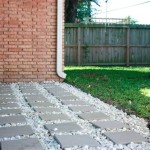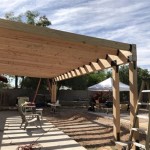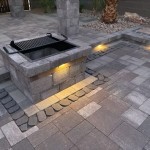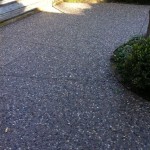Outdoor Patio Pavers: A Comprehensive Guide
Outdoor patio pavers offer a versatile and aesthetically pleasing solution for creating functional and attractive outdoor living spaces. These manufactured blocks, available in a wide array of materials, shapes, sizes, and colors, provide a durable and customizable surface for various applications, ranging from patios and walkways to driveways and pool decks. Understanding the different types of pavers, their installation process, and maintenance requirements is crucial for achieving a successful and long-lasting patio.
Types of Outdoor Patio Pavers
The selection of the right paver material is fundamental to the overall success and longevity of an outdoor patio. Each material offers distinct advantages and disadvantages concerning cost, durability, aesthetics, and maintenance requirements. Common paver materials include concrete, brick, natural stone, and porcelain, each catering to different design preferences and performance needs. Careful consideration of these factors is essential when choosing the appropriate paver for a specific project.
Concrete Pavers: Concrete pavers represent a cost-effective and highly versatile option for patio construction. Manufactured from a mixture of cement, aggregates, and pigments, these pavers can be molded into various shapes and sizes, mimicking the look of natural stone or brick. Concrete pavers are renowned for their strength, durability, and resistance to cracking and weathering. They are also available in a wide range of colors and textures, allowing for diverse design possibilities. Furthermore, concrete pavers require relatively low maintenance, typically involving occasional cleaning and sealing to prevent staining and fading. Interlocking concrete pavers are particularly popular due to their ease of installation and inherent stability.
Brick Pavers: Brick pavers offer a classic and timeless aesthetic, imparting a sense of warmth and character to outdoor spaces. Made from fired clay, brick pavers are known for their durability and resistance to fading. They are available in various shades of red, brown, and gray, allowing for the creation of visually appealing patterns and designs. Brick pavers are permeable and allow water to return to the soil therefore reducing hard surface runoff. While brick pavers are generally durable, they can be susceptible to chipping and cracking under extreme pressure or freeze-thaw cycles. Regular sealing helps protect the pavers from moisture penetration and staining, extending their lifespan.
Natural Stone Pavers: Natural stone pavers provide a luxurious and sophisticated look, bringing the beauty of nature to outdoor living spaces. Common types of natural stone used for pavers include flagstone, travertine, slate, and granite. Each type of stone possesses unique characteristics in terms of color, texture, and pattern. Natural stone pavers are exceptionally durable and resistant to weathering, making them ideal for high-traffic areas. However, they can be more expensive than concrete or brick pavers and may require more specialized installation techniques. Proper sealing is crucial to protect natural stone pavers from staining and moisture damage. Some natural stones, such as slate, may require periodic resealing to maintain their appearance and prevent flaking.
Porcelain Pavers: Porcelain pavers are a relatively new addition to the paver market, gaining popularity due to their exceptional durability, low maintenance requirements, and resistance to staining and fading. Made from dense, non-porous ceramic material, porcelain pavers are impervious to water absorption, making them highly resistant to freeze-thaw damage and mold growth. They are also available in a wide range of colors, textures, and patterns, mimicking the look of natural stone or concrete. Porcelain pavers are lightweight and easy to install, often requiring minimal maintenance beyond occasional cleaning. Their slip-resistant surface makes them an excellent choice for pool decks and other areas prone to moisture.
Installation of Outdoor Patio Pavers
The installation process for outdoor patio pavers is crucial to the long-term stability and performance of the patio. Proper preparation of the sub-base, accurate leveling, and secure paver placement are essential steps to ensure a durable and even surface. While some homeowners may attempt DIY installation, professional installation is recommended for complex projects or when dealing with specific soil conditions.
Sub-Base Preparation: The sub-base is the foundation of the patio and plays a crucial role in its stability and drainage. The existing soil must be excavated to a depth of at least 6-8 inches, depending on the type of paver and the expected traffic load. The excavated area should be compacted thoroughly to create a solid and level surface. A layer of crushed aggregate, typically gravel or crushed stone, is then spread over the compacted soil and compacted again. This layer provides drainage and prevents the pavers from sinking or shifting over time.
Laying the Bedding Layer: A bedding layer of sand is spread over the compacted aggregate base to provide a smooth and even surface for the pavers to rest upon. The sand layer should be approximately 1-2 inches thick and carefully leveled using screed boards and a level. The sand should be dampened slightly to aid in compaction and prevent shifting during paver placement. Avoid over-compacting the sand layer, as this can hinder drainage.
Paver Placement: Pavers are placed individually onto the prepared sand bedding layer, following a predetermined pattern or design. Each paver should be carefully aligned and spaced evenly to create a consistent and aesthetically pleasing surface. A rubber mallet can be used to gently tap the pavers into place and ensure they are level with adjacent pavers. For interlocking pavers, follow the manufacturer's instructions for proper alignment and interlocking mechanisms.
Edge Restraints: Edge restraints are installed around the perimeter of the patio to prevent the pavers from shifting or spreading over time. These restraints can be made of plastic, metal, or concrete and are typically secured to the ground with stakes or spikes. Edge restraints should be placed flush with the paver surface to create a seamless transition between the patio and the surrounding landscape.
Joint Sanding and Compaction: After the pavers are placed and the edge restraints are installed, the joints between the pavers are filled with joint sand. The sand should be swept into the joints using a broom or brush, ensuring that all gaps are completely filled. A plate compactor can then be used to compact the pavers and the joint sand, creating a stable and interlocking surface. Repeat the joint sanding and compaction process as needed to ensure that the joints are fully filled and the pavers are securely locked in place.
Maintenance of Outdoor Patio Pavers
Proper maintenance is essential to preserve the appearance and longevity of an outdoor patio. Regular cleaning, sealing, and occasional repairs can prevent staining, fading, and structural damage. The frequency and intensity of maintenance will vary depending on the type of paver material, the climate, and the level of exposure to foot traffic and weathering.
Regular Cleaning: Regular cleaning is crucial to remove dirt, debris, and stains from the paver surface. Sweep or blow the patio regularly to remove loose dirt and leaves. For more stubborn stains, use a mild detergent and water to scrub the affected area. Avoid using harsh chemicals or abrasive cleaners, as these can damage the paver surface. A pressure washer can be used for more thorough cleaning, but exercise caution to avoid damaging the joints or the paver surface. Use a wide nozzle and low pressure setting to prevent erosion of the joint sand.
Sealing: Sealing the pavers helps protect them from staining, fading, and moisture damage. A good quality paver sealer will penetrate the paver surface, creating a protective barrier that repels water and oil-based stains. The frequency of sealing will depend on the type of paver material and the sealer used. Generally, concrete and natural stone pavers should be sealed every 1-3 years, while porcelain pavers may not require sealing. Follow the manufacturer's instructions for proper application and drying times.
Joint Sand Maintenance: Over time, the joint sand between the pavers may erode or wash away due to weathering and foot traffic. Periodically inspect the joints and refill them with joint sand as needed. Polymeric sand is a popular option for joint filling as it hardens and prevents weed growth. Ensure that the joint sand is properly compacted to prevent future erosion.
Repairing Damaged Pavers: Inspect the patio regularly for cracked, chipped, or sunken pavers. Replace damaged pavers promptly to prevent further damage and maintain the overall appearance of the patio. To replace a damaged paver, carefully remove the surrounding joint sand and lift the paver out of place. Prepare the bedding layer by adding or removing sand as needed to create a level surface. Place the new paver into the opening and tap it gently into place with a rubber mallet. Refill the joints with joint sand and compact the area to secure the paver.
By understanding the different types of outdoor patio pavers, their installation requirements, and maintenance needs, homeowners can create beautiful and functional outdoor living spaces that will provide years of enjoyment.

10 Tips And Tricks For Paver Patios

Types Of Pavers The Home Depot

Outdoor Living Space With Patio Pavers In Rockland County Orange Ny E P Jansen Nursery Stoneyard

Patio Pavers For Modern Landscape Designs Unilock

Paver Patio Ideas The Cards We Drew

The Pros And Cons Of Paver Patios Sequoia Stonescapes

Patio Paver Ideas 8 Ways To Use At Home Bob Vila

Design Gallery Cambridge Pavingstones Soluciones Para La Vida Al Aire Libre Con Armortec Backyard Landscaping Designs Patio Pavers

5 Paver Patio Ideas To Add Your Outdoor Landscape Design In Bedford Nh Northern Lights

Outdoor Space Updates Paver Patios Groff Landscape Design








